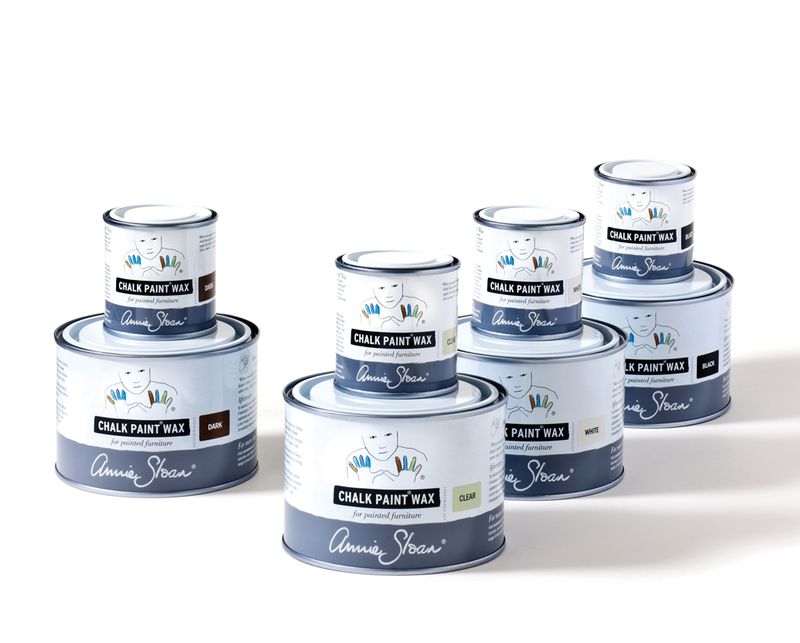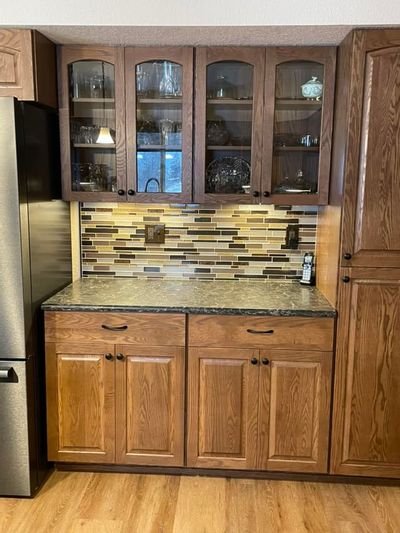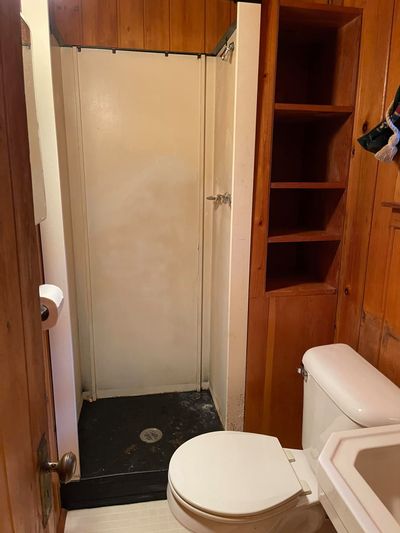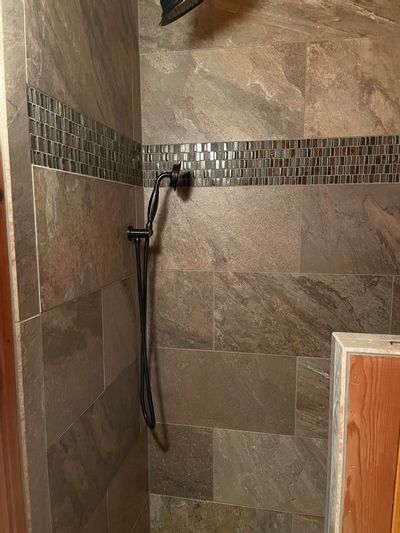Tips for using Chalk Paint® Wax

Chalk Paint® Wax will seal and protect furniture, cabinets, accessories, and even walls painted with Chalk Paint®. This soft wax brings out the depth of a color and gives a beautiful soft sheen finish — or it can be buffed to a higher sheen. Whatever the application, a waxed surface has a fine tactile quality that begs to be touched.
• Chalk Paint® Wax is oil-based and, unlike water-based protective coating products, does not reactivate what is underneath.
• The secret to a successful wax application is ‘less is more’. Always apply Chalk Paint® Wax in thin layers, allowing the wax to absorb into the paint (just like hand cream!). Since virtually all of the applied wax is eventually removed, a heavy coat is wasted.
• Apply enough wax to completely cover the surface. Being too sparing in your application can result in an uneven or patchy look. When in doubt apply a second coat of wax, particularly in areas where you have removed some wax during a sanding or distressing process.
• Wax every part of your piece at least once. Two or three coats will create a wipeable finish for dining room tables and kitchen cabinets.
• Work in small sections at a time (such as the side of a small chest of drawers).
• On larger flat surfaces, apply the wax in the same direction as the wood grain and then even off by brushing or wiping from end to end.
• Remove the excess wax with a clean absorbent cloth, changing to a clean cloth frequently as an old one can become clogged with wax and become ineffective. It is best to move the cloth more slowly. Avoid using a more rapid back and forth motion as this can begin to buff or polish the wax before it is dry, resulting in an uneven appearance to the final finish.
• Use a dry chip brush to pull out any excess wax from crevices and other details. Use a gentle stippling motion and wipe your brush occasionally on a clean cloth to remove any wax buildup.
• An easy test you can do to see if you have removed all of the excess wax is to lightly sweep a clean finger across the surface — if you leave a mark, there is still too much wax remaining. Wipe the surface again with a clean absorbent cloth.
• For a natural sheen, you can leave the finish as is. For a more polished look, allow the wax to dry and then buff with a soft cloth. While drying times can often be as little as 20 minutes, 2 hours can be better and overnight is best. Here's an easy test — place your hand on the surface, if it still feels cool or damp to the touch leave the wax to dry a bit longer until the surface feels room temperature.
• Don’t leave the wax on too long before buffing. It simply becomes harder to polish to an even sheen. You can easily correct this by applying another thin coat of wax, removing the excess, and waiting a more appropriate amount of time before buffing.
• Buffing lightly produces a satin sheen, while more vigorous buffing can produce a higher sheen or even a gloss. Use soft 100% cotton lint-free cloths for buffing — the softer the cloth, the higher the resulting sheen.
• Treat your finished piece with extra care while the wax cures. Chalk Paint® Wax typically cures in just 5 to 21 days. Curing is what strengthens the finish and gives it its durability. Warm, dry conditions during the curing process are preferable; cold temperatures, high humidity, and application thickness can extend curing time.
• Be patient! You can use your newly finished piece during the curing process — just treat it gently and with respect! Wipe up spills immediately and avoid placing objects that would scratch or otherwise damage the surface, excess moisture, and harsh cleaners and abrasive pads. A little bit of care and patience during the curing period will reward you with a finish you will enjoy for years to come.
• White Chalk Paint® Wax can be applied directly onto painted surfaces.
• Apply Dark or Black Chalk Paint® Wax over wet Clear Wax. Otherwise, the pigments that are used to make these waxes can ‘stain’ the underlying paint, making it difficult to blend them out smoothly or remove later.
• Dark or Black Chalk Paint® Wax is meant to subtly age the finish. If your result is too dark, use a clean cloth and a small amount of Clear Wax to ‘erase’ some of the darker color.
• You can mix the colored Chalk Paint® Waxes with Clear Wax to make a lighter color.
• Chalk Paint® Waxes can be colored with small amounts of Chalk Paint® to make custom wax colors.
• Avoid using colored waxes on surfaces that will be subject to hard use, such as tabletops and kitchen cabinets, as these waxes can make future repairs difficult in comparison to a clear wax finish. Touching up with additional wax often results in a halo or ring effect in the affected area. Typically, the best way to make a repair when using a colored wax is to rewax the entire section.
• Any finish can be susceptible to scuff marks, scratches, stains and watermarks. When these occurrences happen to a wax finish, repairs are quickly and easily made using a clean shop towel and about a dime sized amount of Clear Wax rubbed into the marked area.
• Chalk Paint® Wax contains no chemicals that can dry out wood furniture.
• Chalk Paint® Wax will fill in minute scratches and other surface imperfections.
• Use Chalk Paint® Wax to lubricate the tracks and runners of your drawers. They’ll slide in and out with ease after that.
• Chalk Paint® Wax finishes are more abrasion resistant and easier to keep clean than an unwaxed finish.
• Chalk Paint® Wax is by nature water resistant but will spot if not wiped immediately. It is also alcohol soluble and should not be used in bar areas.
• Once fully cured, Chalk Paint® Wax is both food safe and safe for use on baby and children’s furniture. Representative samples of Chalk Paint® Wax have been independently certified as ‘toy safe’ according to European standards (BS EN 71- 3:2013).
• Once Chalk Paint® Wax is applied, only more wax can be applied on top of it — it is incompatible as a base for other protective coatings. Attempting to add our Craqueleur varnish, Lacquer, Pearlescent Glaze, Image Medium, or Gold Size, as well as a polyurethane, polycrylic, or any other topcoat product, over a wax finish is futile as it simply will not adhere.
• Chalk Paint® Wax can be applied over oil-, water-, and alcohol-based systems as long as they are completely dry.
• Chalk Paint® with its unique formulation is the only paint that can be applied over Chalk Paint® Wax without the need to remove the wax first, making it easy to change your finish to match changes in your décor.
• Chalk Paint® Wax is suitable for interior use only. It should not be used on outdoor projects.
• Remember — you can only make two mistakes when applying wax. You can put too much on and you can try to buff it out too soon.





